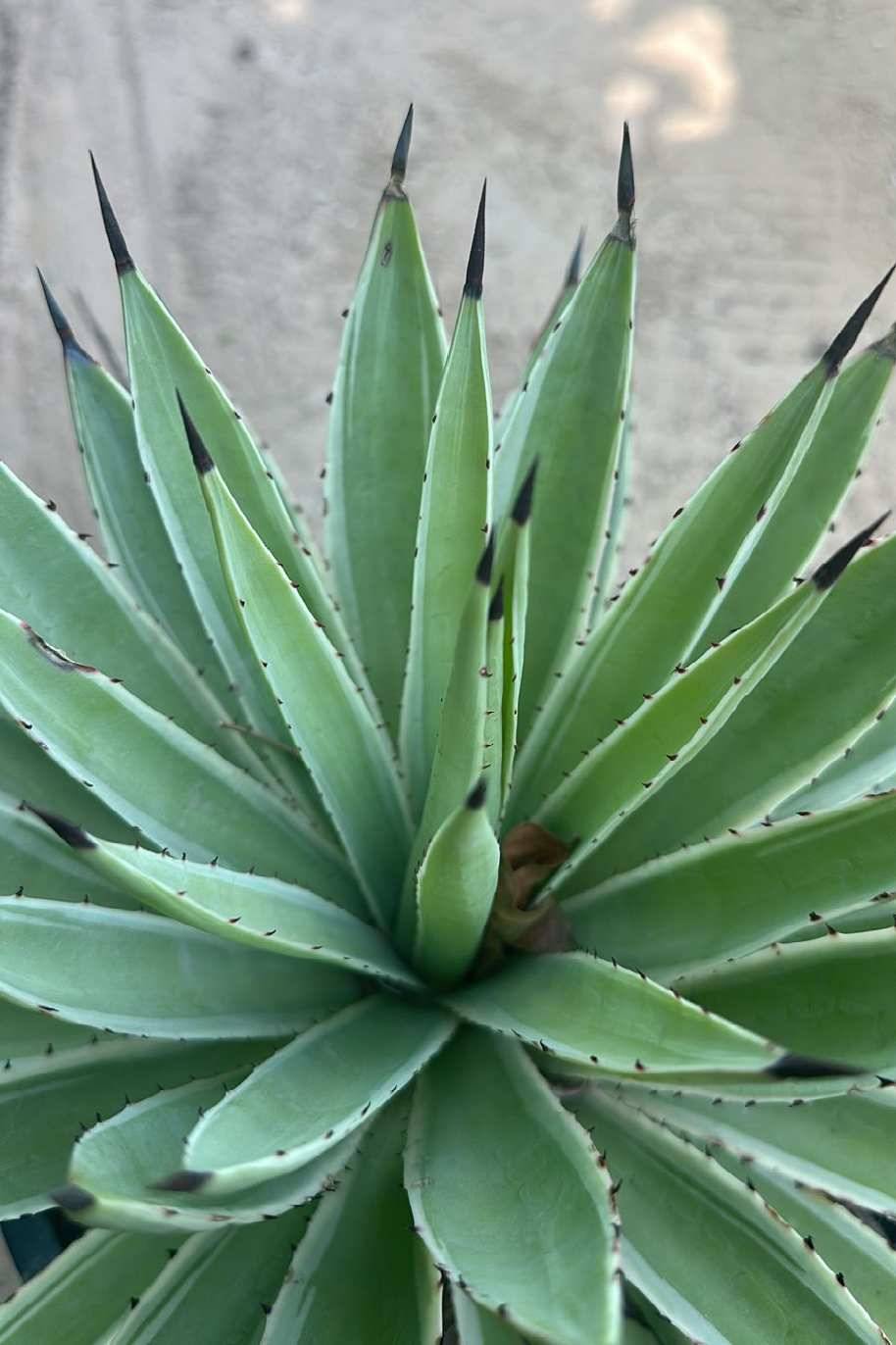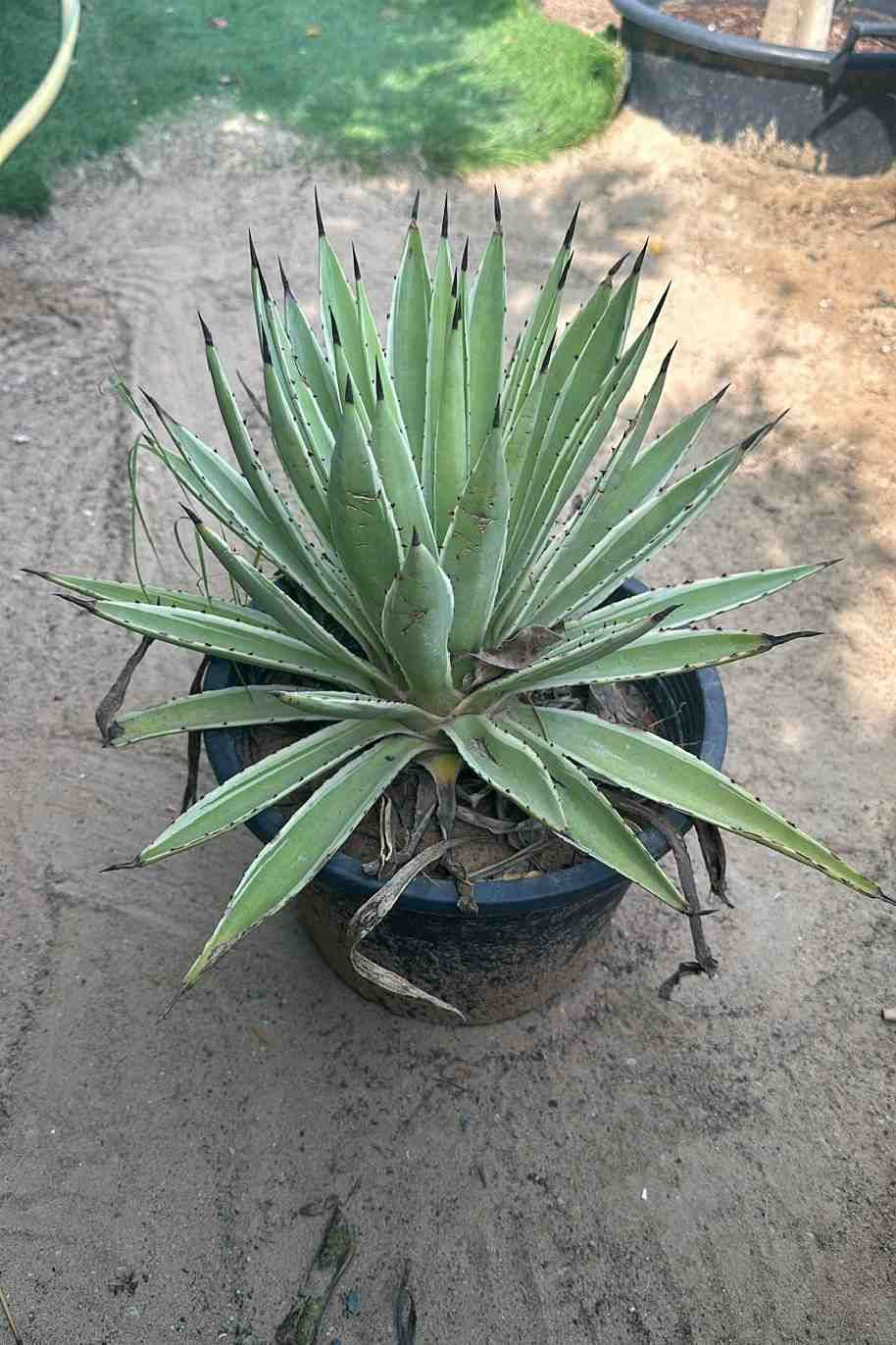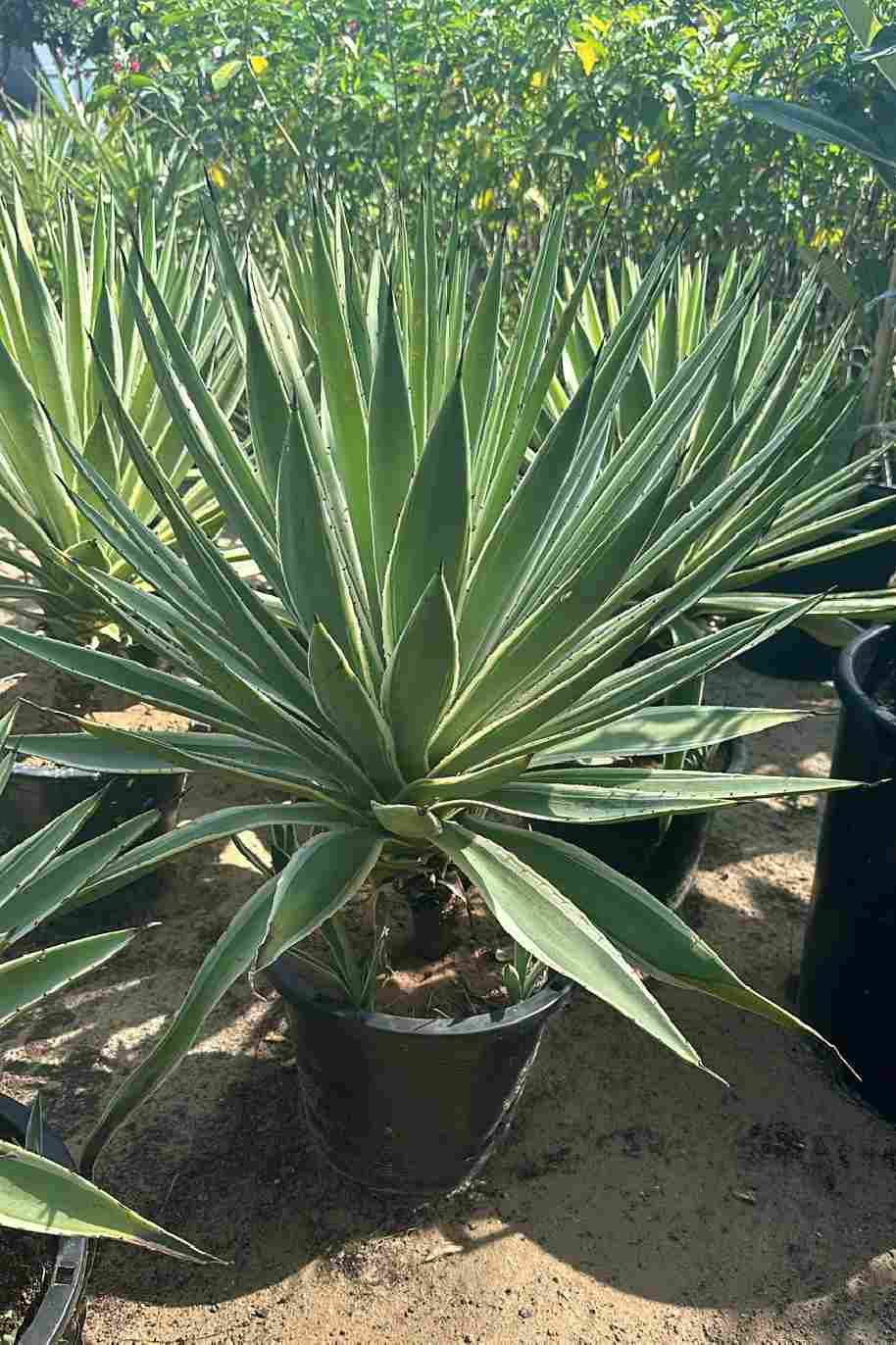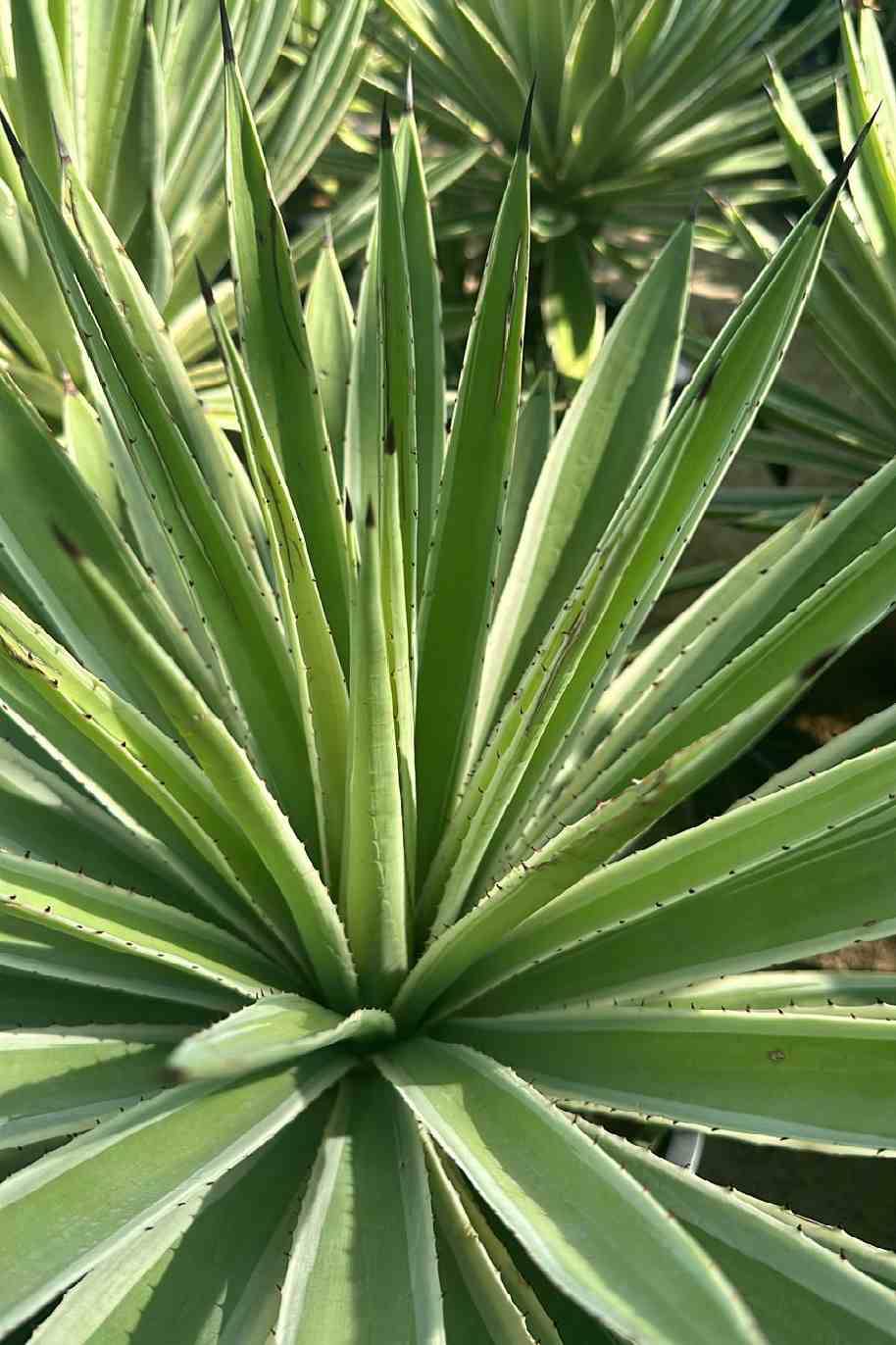Plant Bio
Agave is a genus of succulent plants native to the hot and arid regions of the Americas, particularly Mexico, the southwestern United States, and parts of Central and South America. These plants are known for their striking rosettes of thick, fleshy leaves and architectural forms. Here's a general description:
Leaves: Agave plants typically have rosettes of thick, fleshy leaves that emerge from a central point or stem. The leaves are often rigid and pointed, with sharp spines along the margins. Depending on the species, the leaves may be green, blue-green, gray, or variegated in color, and they can range in size from a few inches to several feet in length.
Flowers: Agaves are monocarpic, meaning they bloom once in their lifetime before dying. The flower stalk, known as a "quiote," emerges from the center of the rosette and can reach impressive heights, sometimes up to 20 feet or more. The flowers are typically large and bell-shaped, often white or yellow in color, and they attract pollinators such as bees, hummingbirds, and bats.
Habitat: Agave plants are well-adapted to hot and arid climates, where they thrive in sandy, rocky soils with excellent drainage. They are commonly found in desert landscapes, rocky hillsides, and coastal regions, where they provide important habitat and food sources for wildlife.
Care Guide for Agave:
Light:
Provide Agave plants with plenty of bright, direct sunlight to promote healthy growth and compact rosette formation. Place them in a sunny location, such as a south- or west-facing window, where they can receive at least 6 to 8 hours of sunlight per day. Outdoors, choose a spot with full sun exposure.
Temperature:
Agaves prefer warm temperatures and are sensitive to frost and freezing temperatures. They thrive in temperatures between 65°F to 85°F (18°C to 29°C) and can tolerate higher temperatures if provided with adequate airflow and ventilation. Protect them from cold drafts and extreme temperature fluctuations.
Watering:
Water Agave plants sparingly, allowing the soil to dry out between waterings. Overwatering is one of the most common problems with Agaves and can lead to root rot and other issues. During the growing season (spring and summer), water deeply but infrequently, allowing excess water to drain away freely. Reduce watering frequency in fall and winter when growth slows down.
Soil:
Plant Agave in well-draining soil with a sandy or gravelly texture. A specialized cactus or succulent potting mix works well, or you can amend regular potting soil with perlite, coarse sand, or pumice to improve drainage. Ensure the soil is loose and porous to prevent waterlogged conditions.
Fertilization:
Agave plants are relatively low-maintenance and do not require frequent fertilization. Feed them sparingly with a balanced, water-soluble fertilizer diluted to half-strength every 6 to 8 weeks during the growing season. Avoid overfertilizing, as excessive nutrients can cause leaf burn and other problems.
Potting and Repotting:
Choose a container with drainage holes to prevent water from accumulating around the roots. Repot Agave plants only when necessary, typically every 2 to 3 years, or when they outgrow their current container. Use fresh potting mix and handle the plants carefully, as their sharp spines can cause injury.
Pruning:
Prune dead or damaged leaves from Agave plants as needed to maintain their appearance and health. Use clean, sharp pruning shears to make precise cuts, and wear gloves to protect your hands from the sharp spines.
Pest and Disease Control:
Agave plants are relatively pest-resistant but may occasionally attract common houseplant pests such as mealybugs, scale insects, and spider mites. Inspect the foliage regularly for signs of infestation and treat any pests promptly with insecticidal soap or neem oil. Avoid overwatering, as it can lead to root rot and fungal diseases.
With their striking appearance and low-maintenance care requirements, Agave plants are excellent choices for xeriscape gardens, desert landscapes, and indoor succulent collections. Follow these care guidelines to ensure your Agaves thrive and remain healthy for years to come. Adjust care practices based on your specific growing conditions and the needs of the plants.











